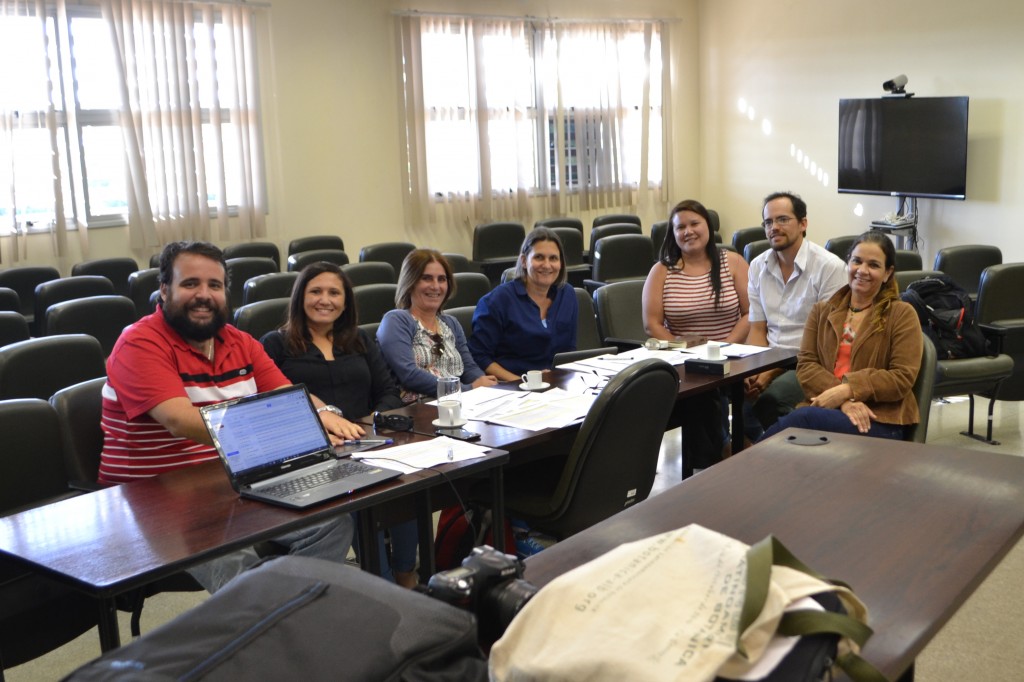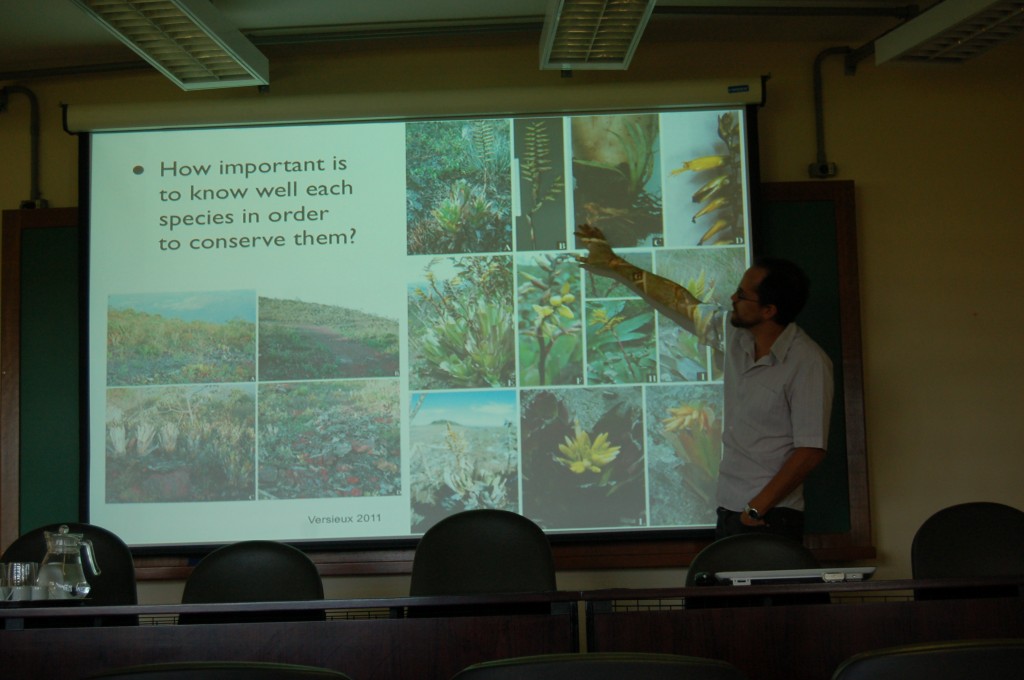No período de 16 a 23/09/2016 ocorreu no Centro de Energia Nuclear na Agricultura, Universidade de São Paulo, o Workshop do Projeto PROCAD, Projeto de Cooperação Acadêmica que envolve 4 Programas de Pós-Graduação (PPG) com o apoio CAPES: PPG Ciências CENA/USP, Piracicxaba, SP; PPG Recursos Genéticos Vegetais, UFRB, Cruz das Albas, BA; PPG Produção Vegetal UFMG, Montes Claros, MG; PPG Ciências Florestais, Natal, RN, com apoio PROCAD e PPG-CENA. Os Coordenadores das 4 equipes e outros participantes em missão de pesquisa no CENA se reuniram para discussão das atividades realizadas nos dois primeiros anos do projeto e planejamento dos anos seguintes. O Projeto envolve a mobilidade de estudantes de iniciação científica e pós-graduação para o desenvolvimento de pesquisa, bem como missões docentes e estágios pós-doutorais para o aprimoramento dos Programas de Pós-Graduação. Participaram do Workshop os Coordenadores das Equipes, Prof. Adriana P. Martinelli (CENA/USP), Profa. Maria Angélica Pereira Carvalho Costa (UFRB – Cruz das Almas), Profa. Leidivan Frazão (UFMG – Montes Claros), Prof. Leonardo Versieux (UFRN – Natal) e também a Profa. Lidyanne Aona (UFRB), Dra. Fernanda Vidigal D. Souza (EMBRAPA – CNPMF) e Everton Hilo Souza (EMBRAPA – CNPMF).
Como parte das atividades, no dia 21/09, no Anfiteatro Epaminondas S. B. Ferraz, CENA/USP, o Prof. Leonardo Versieux, professor na Universidade Federal do Rio Grande do Norte e coordenador da equipe da UFRN, apresentou a palestra intitulada “Advances in Sylstematics, conservation and garden landscape use of native ornamental plant families in Northeastern Brazil” e a Prof. Adriana P. Martinelli, coordenadora geral do projeto, apresentou aos presentes as características gerais do Projeto de Cooperação Acadêmica em desenvolvimento. Estiveram presentes estudantes e servidores docentes e não docentes do CENA e ESALQ.
ADVANCES IN THE SYSTEMATICS, CONSERVATION AND GARDEN LANDSCAPE USE OF NATIVE ORNAMENTAL PLANT FAMILIES IN NORTHEASTERN BRAZIL.
Leonardo M. Versieux
Universidade Federal do Rio Grande do Norte, Brazil; lversieux@yahoo.com.br, Herbarium Curator, Dept. of Botany and Zoology
I will firstly present our lab’s lines of research, which involves a broad spectrum of investigations based on taxa (mainly on tropical families), systematics, evolution, molecular systematics and phylogeography, floristics and economic use of the flora, particularly ornamental families, which are the focus of the Procad. In the second moment, I will present the importance to have a good comprehension of the systematics of a group in order to conserve its genetic diversity and will use the Bromeliaceae (pineapple family) to illustrate that its knowledge in Brazil is progressively improving although many regions are still understudied, as some dry habitats and the Amazonian region and discuss an overview of the advances on the taxonomy and floristics of integrative, unpublished or recently published research, primarily focused on Tillandsioideae: Alcantarea and Vriesea, as well as Bromelioideae: Araeococcus and Cryptanthus. Also, a discussion will be provided on the improvement of the floristic knowledge of Bromeliaceae in previously understudied regions, such as the north of the Caatinga biome, specifically the states of Rio Grande do Norte, Ceará, where several new occurrences are being recorded (e.g. Aechmea muricata, Cryptanthus zonatus, and Orthophytum disjunctum); the state of Mato Grosso do Sul (11 genera and 41 spp); the state of Bahia, which has a Flora project underway, with the taxonomic treatment of Alcantarea published and Tillandsia and Vriesea nearly concluded, the treatment of Bromeliaceae for the Flora of Sergipe. These works point toward the need to conduct further field-work and produce Floras, to improve the scientific collections since many species are still poorly understood, and they suggest the necessity to consider establishing centered and institutional living collections and DNA banks in order to take advantage of the material collected by different students in their research. The progress on the taxonomy of Alcantarea will also be briefly discussed using recent data on palynology and molecular markers (A. imperialis vs. A. brasiliana). This genus has been monographed recently and currently comprises nearly 40 species. Additional studies involving species delimitation in Vriesea, Guzmania and Mezobromelia will be discussed using molecular, floral, and anatomical data, indicating the necessity to collaborate at the international and national levels. Opportunities and challenges for new research within the Bromeliaceae in Brazil will also be discussed, highlighting the group’s demand for more taxonomic work and importance of living collections. I will close the presentation showing new occurrences and an overview of Caatinga plants that have ornamental potential and that have been largely ignored in landscape design, considering the international trend to use local plants while creating gardens, connecting urban and natural areas, and contributing to the major goal of conserving plants diversity.


